Blooming Stefanotis is a colorful, gentle and fragrant phenomenon, for which it is not a pity to make a lot of effort. Indeed, this plant is quite beautiful when it releases many white colors resembling a bride’s wreath. Such external beauty is complemented by a pleasant aroma, thanks to which Stefanotis is often called the Madagascar jasmine. And although Stefanotis is very moody in leaving, it is one of the most popular indoor flowers.
Content
Description of Stefanotis
- Stefanotis or Marseige is a delicate plant of the Familia family. In nature, about 15 wild species are identified. But at home, only abundantly flowering Stefanotis survives.
- The flower is an evergreen vine. In nature where the plant is not pruning, the length of the shoots can reach 5 m.
- The foliage is dark green, oval. The length of the leaf is 10-12 cm, according to the center, the sheet canvas is separated by a clear vein. On the shoots, the leaves are opposite.
- The Stefanotis plant is remembered by wonderful flowering. Delicate star flowers consist of 5 elongated petals that form a funnel. The color of the buds are different: snow-white, cream-milk, white-yellow, pale purple.
- The flowers look like the crown of the princess, their diameter is 5 cm. Flowers are collected in bundles of seven pieces in the inflorescence.
- The flowering period in nature is 10 months. If Stefanotis grows at home, fragrant inflorescences retain freshness from June to September. It is worth noting that the cultivated stefanotis blooms with pale white wax flowers that retained their original aroma.
- In Stefanotis, the fruits are represented by a two-parted box of oval-stranded shape. The fruits are quite large, completely mature during the year, after which they crack and scatter seeds-zontics, like dandelion parachutes.
- Stepanotis juice is poisonous. Its hit the mucous membranes ends with severe irritation. For this reason, planting and pruning are carried out only in gloves. It is advisable to protect from contact with the plant of babies and pets.

Types of Stefanotis
Of the 15 species of Stepanotis flower, only one is grown in the culture - floribunda or abundantly flowering. This plant was able to absolutely adapt to indoor conditions. The flowers of this vines are white, up to 6 cm in diane. On a twig, staining flowers gather in groups of 7 pieces. The leaves are dark green, smooth, can grow the size of a palm.
Floribunda has a subspecies - Stefanotis Variegat. The difference between the flower in the color of its leaves: they are decorated with strokes of light green, yellow, white shade.

Stefanotis planting at home
Stefanotis is a fast -growing liana that needs certain growth conditions. In addition to suitable temperature and lighting, the plant requires support.
Conditions for Stefanotis
- The full development and abundant flowering of the Madagascar jasmine is facilitated by a reasonable choice of place of residence, the requirements for which are replaced throughout the year. With the advent of autumn and until the end of spring, Stephanotis prefers to grow on the windows of southern orientation. But in the summer, a pot of vine has to move to the western window to avoid foliage burns.
- In nature, Liana lives in the shade of neighboring trees and bushes. She does not survive under the scorching sun, but the twilight is fatal for her. To make the plant comfortable, in the summer it is placed in lace partial shade.
- The recommended duration of daylight hours is 10 hours. Therefore, in winter, Stefanotis provides additional lighting. In conditions of sunlight deficiency, the foliage foliage is covered with light brown stains, and sometimes there is a complete dropping of leaves.
- The temperature of the off -season is suitable for tropical stefanotis. In April-September, the temperature is maintained at +20 ... +25 ° C, from September to the end of November a temperature of not higher than +22 ° C is needed. In the remaining months, they provide +14 ... +16 ° C. Such a temperature schedule is necessary for regular flowering of stefanotis.
- Marseilia loves peace. It is not recommended to expose it in the place where the draft occurs - this will provoke raising leaves and buds.
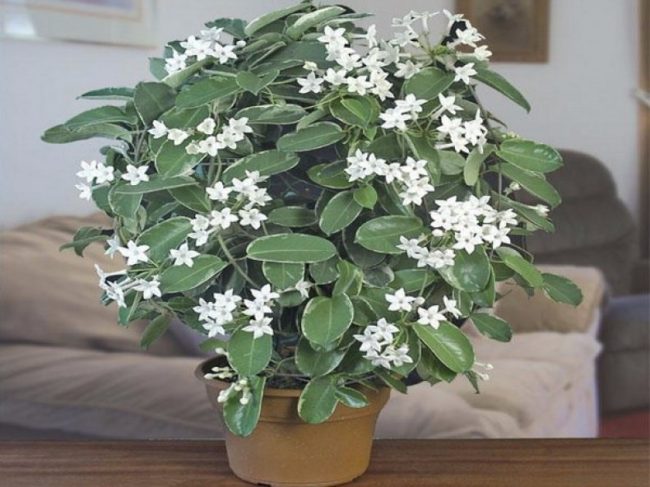
Stephanotis requirements for soil
When choosing a soil for stefanotis, pay attention to excellent air and waterproof properties. In order to avoid error, it is better to purchase a special soil mixture for decorative flowering species, and then dilute it with sand a little.
However, flower growers are still advised to prepare soil for Stefanotis with their own hands. It is only necessary to mix peat, garden soil, large sand and three -year compost in the same amount. Or take two parts of loose meadow earth and peat to each part of the humus.

Stefanotis, transplant
- To plant stefanotis, prepare a spacious flowerpot made of ceramics. It is better to choose a stable model that will be quite heavy. This will ensure the balance of fast -growing vines.
- It is better to carry out landing work in the spring, when there are no buds on Stefanotis. However, you can transplant a flower at any other time, but so you risk removing flowering for an indefinite period.
- Young vines need an annual transplant, and mature - no more than twice a year.
- The plant is transplanted only by the method of transshipment while preserving the old coma of the earth on the roots. Such a transplant does not damage small roots, which often leads to a withering of a vine.
- After planting, stefanotis is watered carefully. Excess moisture can prevent rooting, and the plant will begin to hurt. In the first few weeks, it is advisable to add liquid mixture that promotes root formation into the soil.

Stefanotis, home care
Stefanotis is skillfully used in home floriculture for vertical landscaping. But to ensure decorativeness, the plant needs to be regularly looked after.
Watering Stefanotis
The Madagascar jasmine needs a variety of soil moisturizations:
- In the hot season, abundant and rather frequent watering is carried out. To understand that the plant must be watered again, the drying of the upper ball of the Earth in the flowerpot will help.
- In the autumn-winter period, stefanotis is rarely watered, but very saturatedly until the soil is completely wet to the bottom. Be sure to ensure that the soil does not completely dry.
- In the spring of watering of the homemade flower of Stephanotis, they begin to increase. About 2-3 irrigation is carried out per week.
- To moisturize the soil, use soft water at room temperature. It can be defended or filtered.
- The appearance of an unpleasant smell from a flowerpot and wilting the aboveground part of the vine is a sure sign of stagnation of moisture in the soil. In this case, an emergency replacement of the soil and the drying of the rhizome are required.
- Decorative liana can grow only in conditions of high humidity, so it is important to spray it often. In the summer period, the plant is sprayed twice a day. And with the onset of cold weather will be enough once. Spraying is carried out with warm water.
- In the heating season, an additional moisture source is provided in the room. The flowerpot can be placed on wet expanded clay or a special air humidifier nearby.
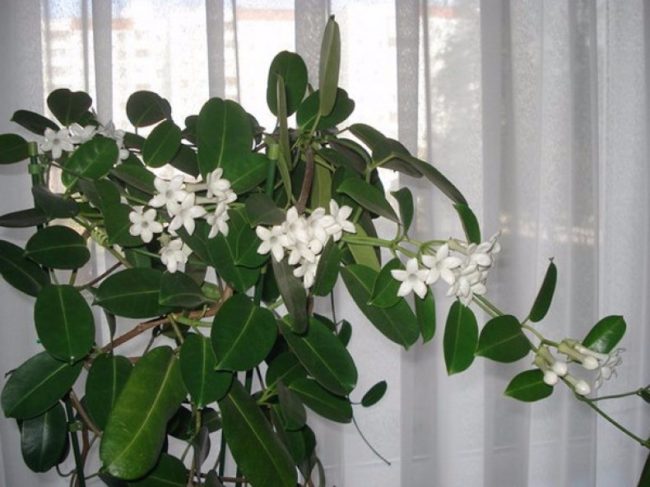
Stefanotis top dressing
Starting in March and ending October, fertilizers are made. Without additional top dressing, Stefanotis cannot grow and produce buds. Use complex mixtures with a predominance of potassium. Feel the flower every 2 weeks.
Nitrogen fertilizers are better not to use. Nitrogen stimulates excessive growth of shoots, which violates the plant’s life cycle: Stefanotis does not worry well and does not bloom.
Stepanotis peace period
In the last decade of November, Stefanotis goes to rest. In order for the plant to relax, the temperature in the room is reduced by several degrees to +15. Water the plant at this time very carefully, but no top dressing is carried out. During the next couple of weeks, the liana will gain strength before flowering.
Stefanotis pruning
Pruning plays one of the key roles in the flowering of Stefanotis. The fact is that the plant lets out buds only on young shoots, so at the beginning of spring the old and elongated shoots are removed.
How to make Stephanotis bloom
After the purchase, Stefanotis may not bloom. This is due to adaptive processes after moving to a new place. If Stefanotis does not bloom after acclimatization, it is necessary to eliminate the cause of the problem.
Normally, stefanotis blooms in the first summer days. This tender and extremely magnificent sight lasts as long as 4 months. However, vone can bloom so actively the age of no younger than three years. Therefore, if you still have a very young plant, you will have to wait.
There are also a number of reasons why Stefanotis does not bloom:
- Warm sleep period.
- Using fertilizers with nitrogen.
- Incorrect watering.
- Sunlight deficiency.
If you find one of these inaccuracies in leaving the vine, correct errors, and it will bloom.
Important! During the budding period, indoor stefanotis cannot be rearranged to a new place, otherwise the growth of buds will stop, and you will not wait for flowering.
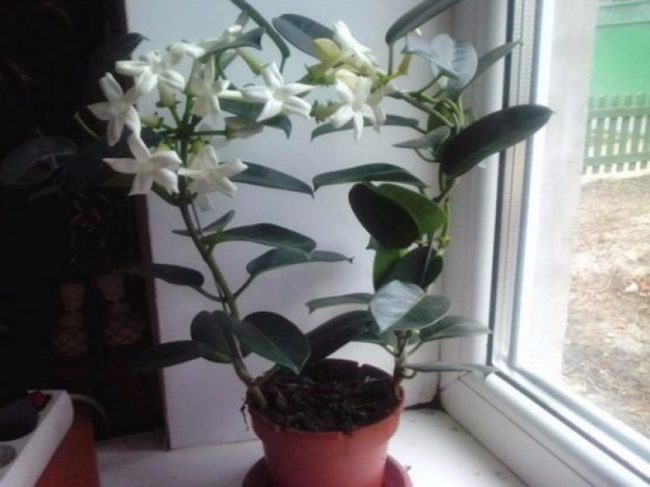
Stefanotis, care errors
It often happens that Stefanotis turns yellow, loses the leaves, worships, and sometimes completely dies. To preserve your indoor plant, we consider possible errors in growing stefanotis in the table:
Stefanotis diseases and pests
- Drilling of the plant. A long -term excess of moisture always leads to the death of the plant. At first, it is enough to replace the soil and remove the rotten roots. In case of obvious signs of the development of the fungus, the entire plant must be treated with foundazole (2 g/l of water). If there is no effect from treatment, the vine will have to be destroyed. Preventive measures: the organization of irrigation, disinfection of the soil before planting, the exclusion of sudden temperature differences.
- Powder. Sticky spots are actively spreading throughout the plant, preventing photosynthesis. Without treatment, the leaves dry and the liana dies. It is necessary to process the entire aboveground part with topaz or ambulance. Prevention: sufficient length of daylight hours, optimal watering.
- Mushroom mosquito. Pest larvae quickly destroy leaves and shoots. To destroy insects use a rapor. Best prevention: installation near the Mushoured plant.
- Aphid. The colonies of pests leave a sugar plaque, depleted the leaves and they die. As a treatment, use the treatment with an actor or soapy solution. Prevention: maintaining air humidity.
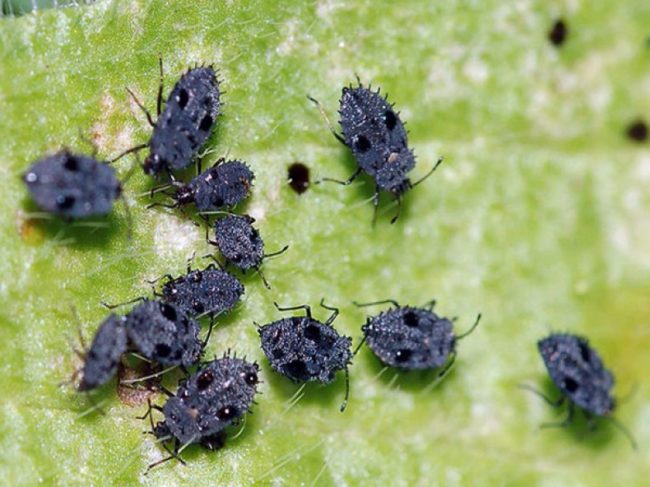
Stefanotis, reproduction
Madagascar jasmine can be propagated by growing seeds or cuttings.
The seed propagation of Stefanotis
We will immediately make a reservation that growing stefanotis from seeds is a very difficult task. It is only for those who have a lot of patience and time.
Sowing seeds:
- Soak the seeds in boiled water for 48 hours.
- Take on the part of steamed peat and earth, fill the pot soil, watering.
- Draw the seeds into the soil by 5 mm, cover the pot with a film.
- Place a container with seeds in a light and warm room.
- As you dry, spray the soil.
- Remove the condensate on the film daily so that no bit falls on seedlings. The seedlings of seedlings will take up to 60 days.
- When a couple of real leaves form on the sprouts, plants are dive into separate pots with soil for stefanotis.
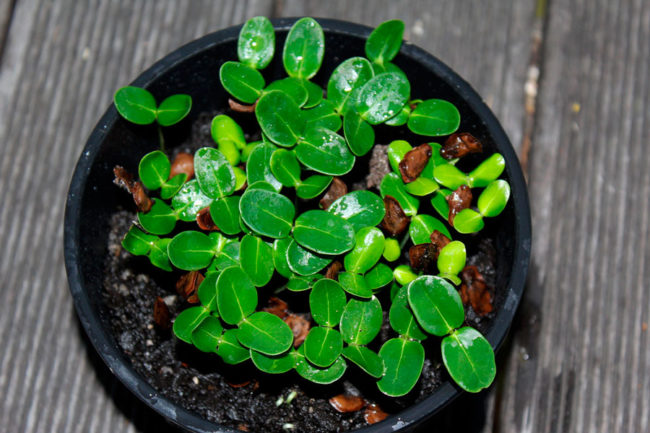
Propagation of stefanotis using cuttings
The Madagascar jasmine is a difficult to steal flower, therefore, in the case of its cuttings, phytohormones are necessarily used. This is perhaps the only method of reproduction that allows you to quickly grow healthy stefanotis with the genetic features of the parent.
Conduct a cuttings in the spring-summer season:
- At the time of trimming, several semi -earned cuttings are selected. Each should have 2-5 leaves.
- Pruning must be carried out just below the node, and then immediately processed the bottom of the cuttings by the rhizome.
- Then take a pot and fill it with sand. Cuttings at an angle are buried in the sand. Planting depth 1.5 cm.
- On top, the stalk is covered with a cut bottle of plastic. The greenhouse is ventilated daily and at the same time moisturize the sand.
- After 16-20 days, the cuttings root.
- They take new containers 7-9 cm high, fill them with a suitable substrate and plant young plants.
- Seedlings hold at +18 ° C in the afternoon, and +14 ° C at night.
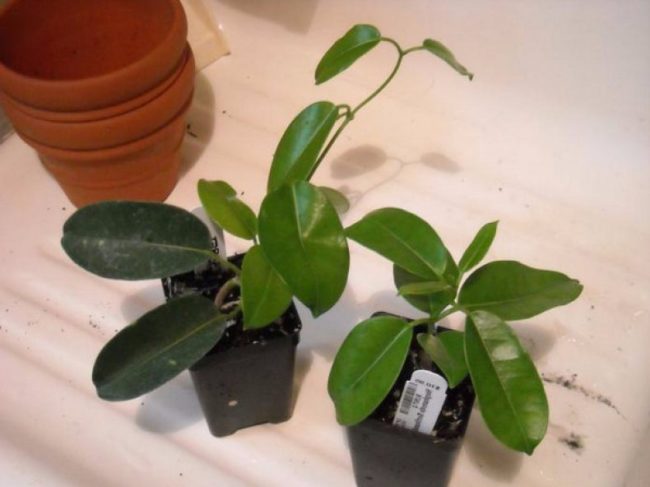
Stefanotis in the photo
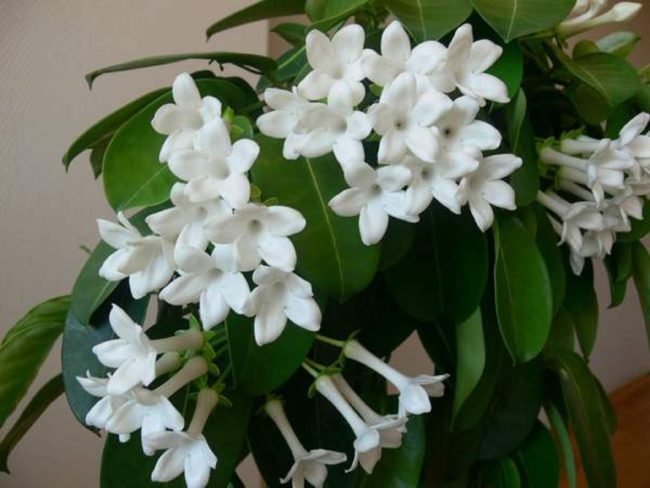
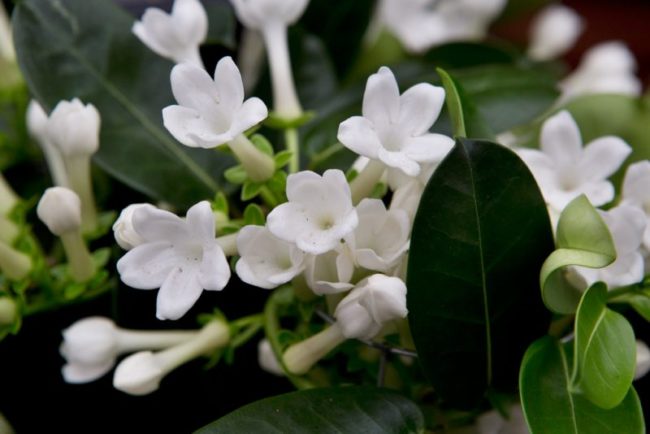












Comments
a couple of years ago, there was no side of metrogils from the same problem, there were no side effects ...
I’m not a fan of peeling at all, it saves from acne of metrogil, it also smoothes it ...
Great article! ...
I take the second course of the Capsules Climafite 911. The tides went very quickly. It became calmer, irritability went away and I sleep well ...
i also noticed - it is worth nervous, everything immediately affects the face. Therefore, I try to avoid conflicts and unpleasant people. Of the creams, I like Miaflow from wrinkles - smoothes not only small wrinkles ...